Reviewing 2020 CRP Enrollment
TOPICS
Conservation Reserve Program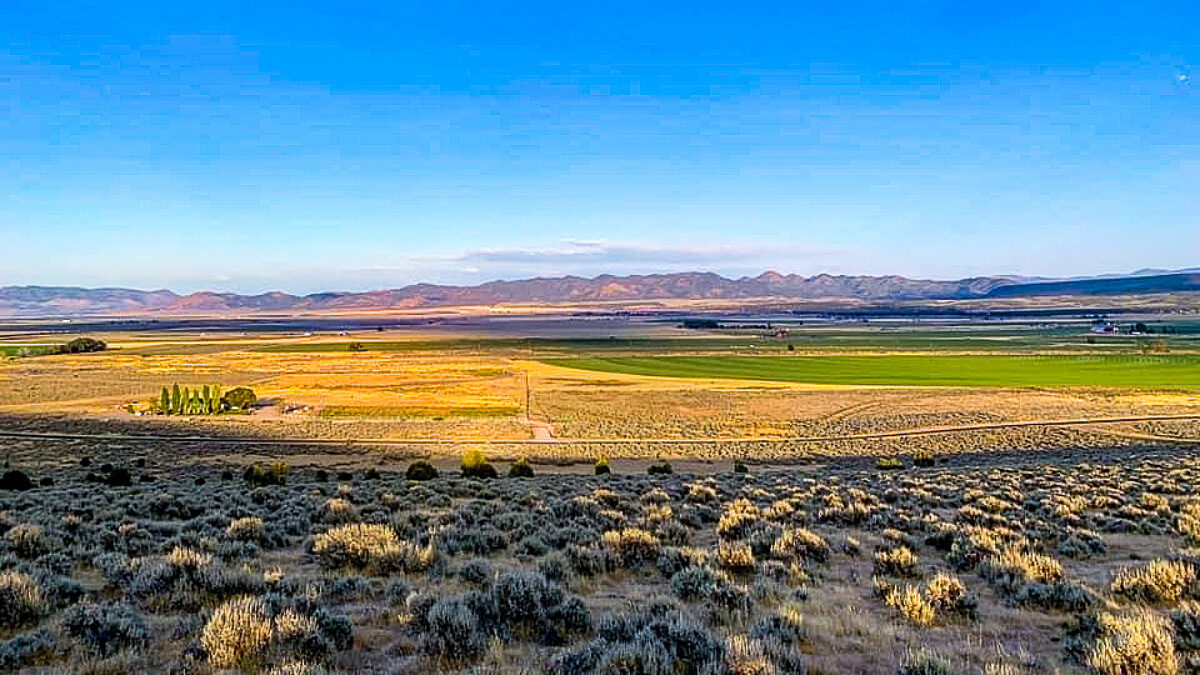
photo credit: Kyle L. Wilson, Used with Permission
John Newton, Ph.D.
Vice President of Public Policy and Economic Analysis
USDA’s Conservation Reserve Program is one of the largest federally administered private land retirement programs. Under CRP, in exchange for annual rental payments ranging from $10 per acre to nearly $300 per acre, farmers and landowners voluntarily remove environmentally sensitive land from agricultural production to conserve soil, water and wildlife resources. Annual outlays under the CRP program are nearly $2 billion per year. The 2018 farm bill made several changes to CRP including expanding the acreage cap to 27 million acres by 2023, allowing for emergency haying and grazing on CRP land and a reduction in CRP rental rates, i.e., Conservation Reserve Program in the 2018 Farm Bill.
2020 CRP County-Level Enrollment
Recently released data from USDA’s Farm Service Agency indicates that as of September 2020, 21.9 million acres were enrolled in CRP, with annual rental payments totaling $1.795 billion. Compared to September 2019, 400,000 fewer acres were enrolled in CRP and total rental payments have declined by $20 million. Despite fewer acres being enrolled in CRP and lower total rental payments, the average rental rate per acre this year increased marginally to $82 per acre.
CRP enrollment was the highest in the Texas Panhandle, portions of western Kansas, eastern Colorado, Iowa, North and South Dakotas and into Washington. Across these seven states, nearly 12 million acres were enrolled in CRP. The top 10 states, including Nebraska, Montana and Minnesota, represented nearly 70% of all CRP acreage. Across the U.S., a total of 21.9 million acres were enrolled in CRP. Figure 1 identifies county-level CRP enrolled acres.
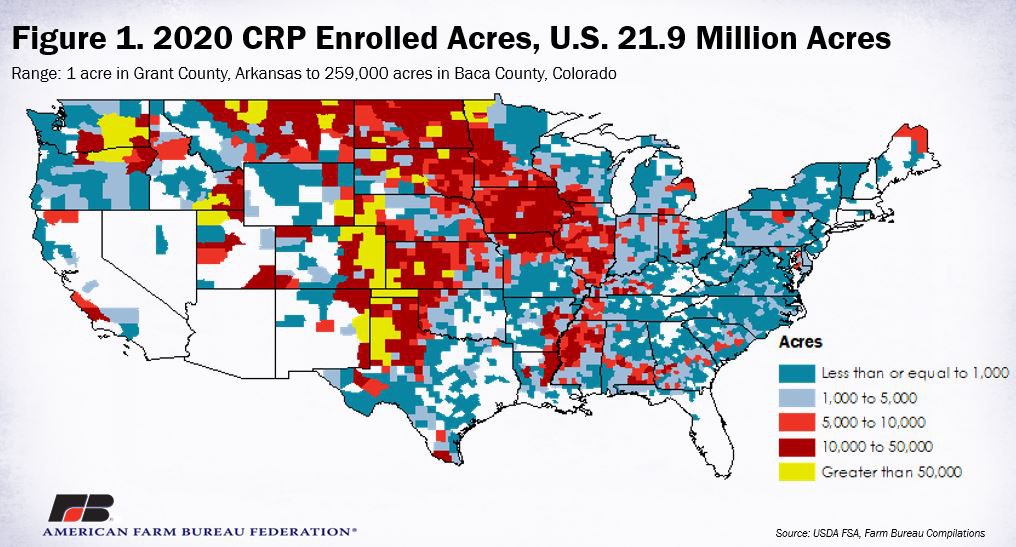
While CRP enrollment was the highest in Texas, Kansas, Colorado and Iowa, annual rental payments were the highest across the Corn Belt and in northwest Washington. In portions of Illinois, CRP rental rates approached $300 per acre. Meanwhile, across much of the Southwest and West, CRP rental rates were below $50 per acre, and were less than $20 per acre in portions of Texas, Arizona and New Mexico. The national average CRP rental rate was $82 per acre. Figure 2 identifies county-average CRP rental rates.
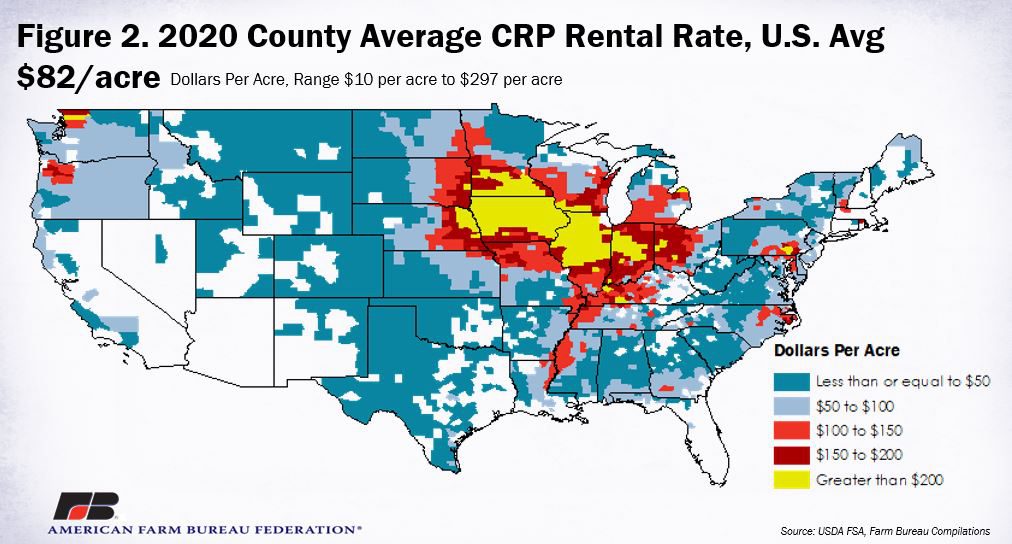
Combining the CRP acreage and CRP average rental rates, total rental payments approached $1.8 billion. Total CRP rental payments are nearly $400 million in Iowa, followed by approximately $170 million in Illinois. Total rental payments in Minnesota are estimated at nearly $140 million, while rental payments across South Dakota are estimated at more than $100 million. At the county-level, Whitman and Douglas counties in Washington are each estimated to receive more than $10 million in CRP rental payments. Expanding into Texas and Colorado, nearly 300 counties are estimated to receive more than $2 million in CRP rental payments. Figure 3 identifies estimated CRP rental payments by county.
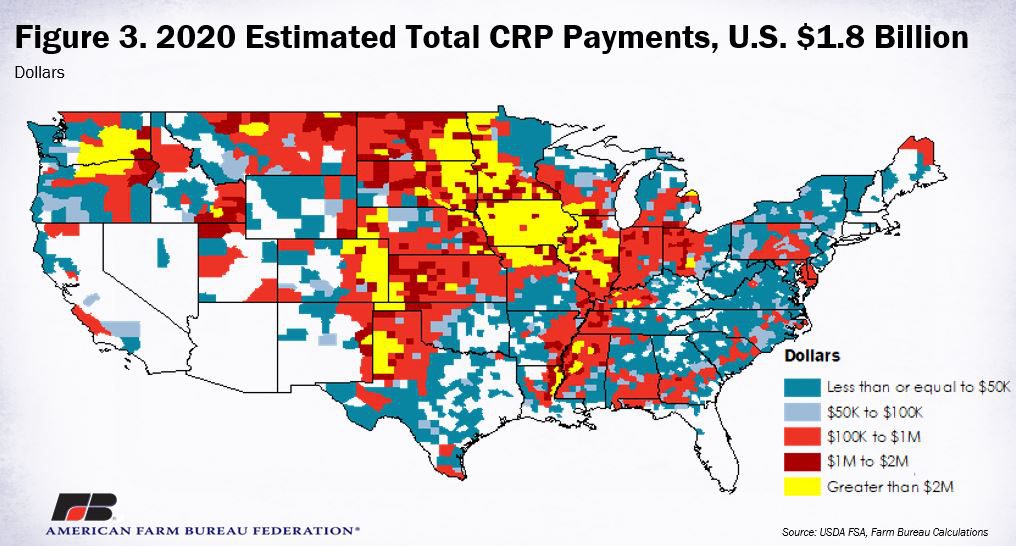
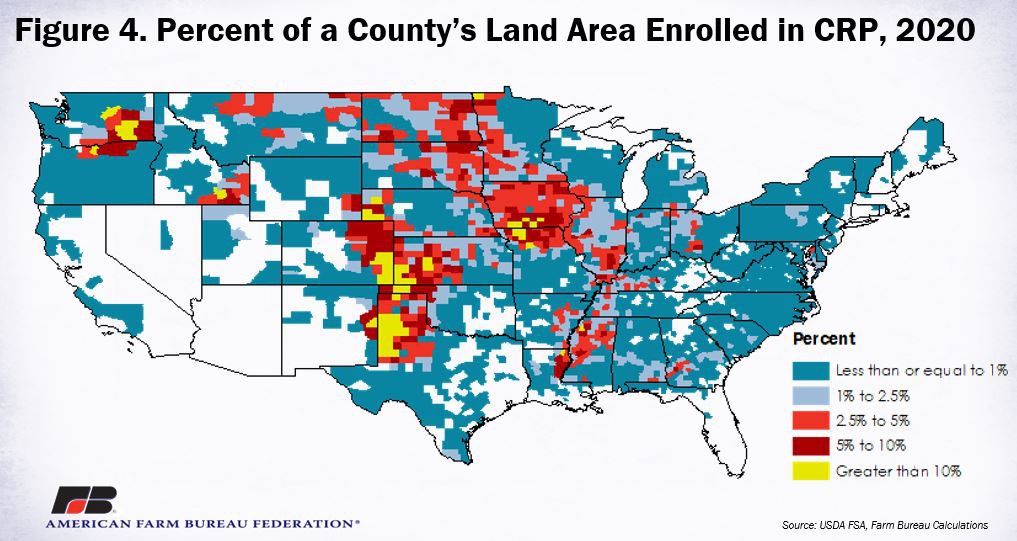
Summary
Recently released data indicates that nearly 22 million acres are enrolled in USDA’s CRP program. CRP enrollment is the highest in Texas, Colorado, Kansas and Iowa. Total rental payments are $1.8 billion, and the average rental rate increased this year to $82 per acre. Across the U.S., average county-level rental rates range from $10 per acre in the Southwest to nearly $300 per acre in the Corn Belt.
In the coming three years more than 12 million acres of current CRP contracts are expected to expire, providing farmers and landowners the opportunity to re-enroll environmentally sensitive cropland, enroll land designed to preserve or enhance wildlife habitat or potentially bring that land back into production agriculture.
Farm Bureau policy supports land in site-specific locations in critical need of conservation measures, such as highly erodible land, being enrolled in the CRP program. In regions where working land conservation programs are better for the rural economy, general whole-farm enrollments should be eliminated unless all acres on the farm meet the local criteria for conservation measures. Farm Bureau supports conservation programs and working lands programs that provide enhanced environmental protection, conservation and renewed economic opportunities for farmers and ranchers.
